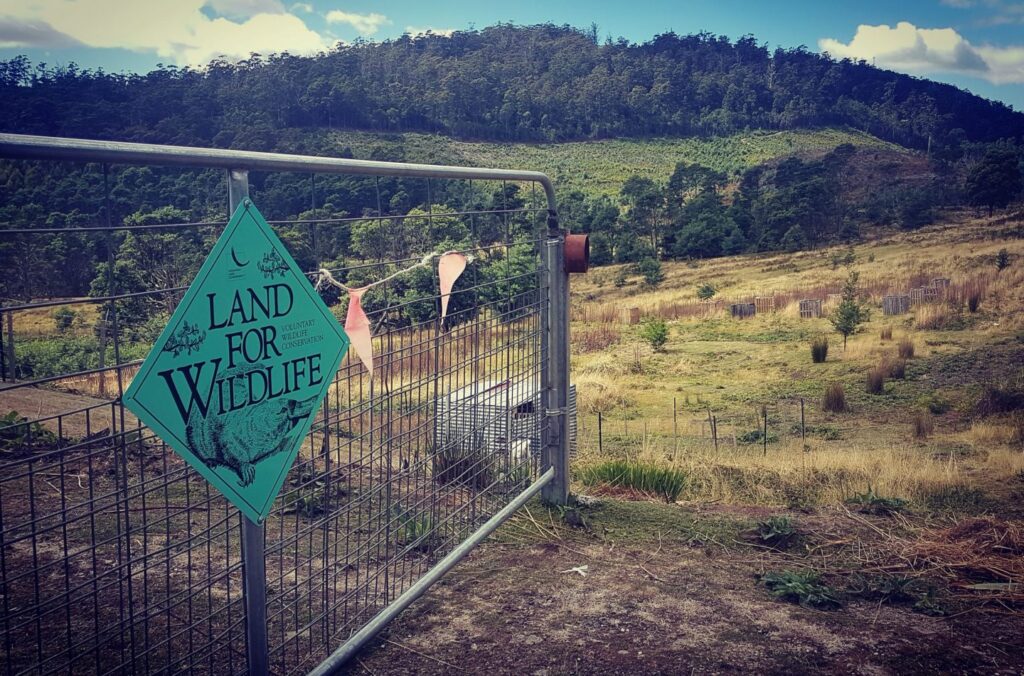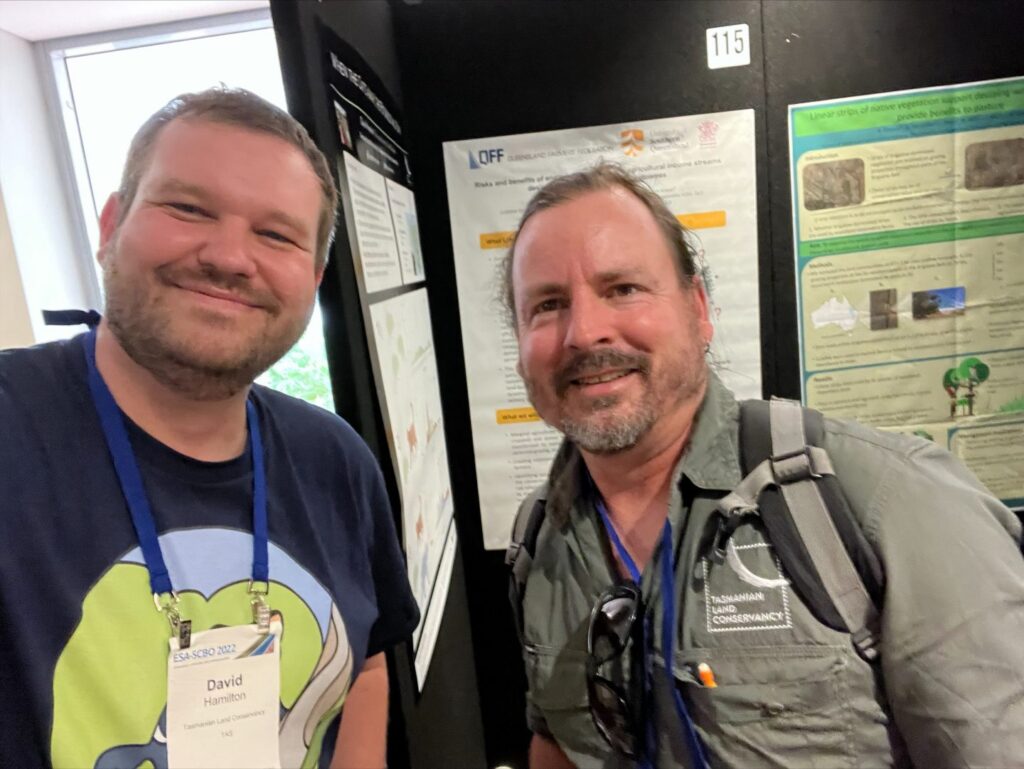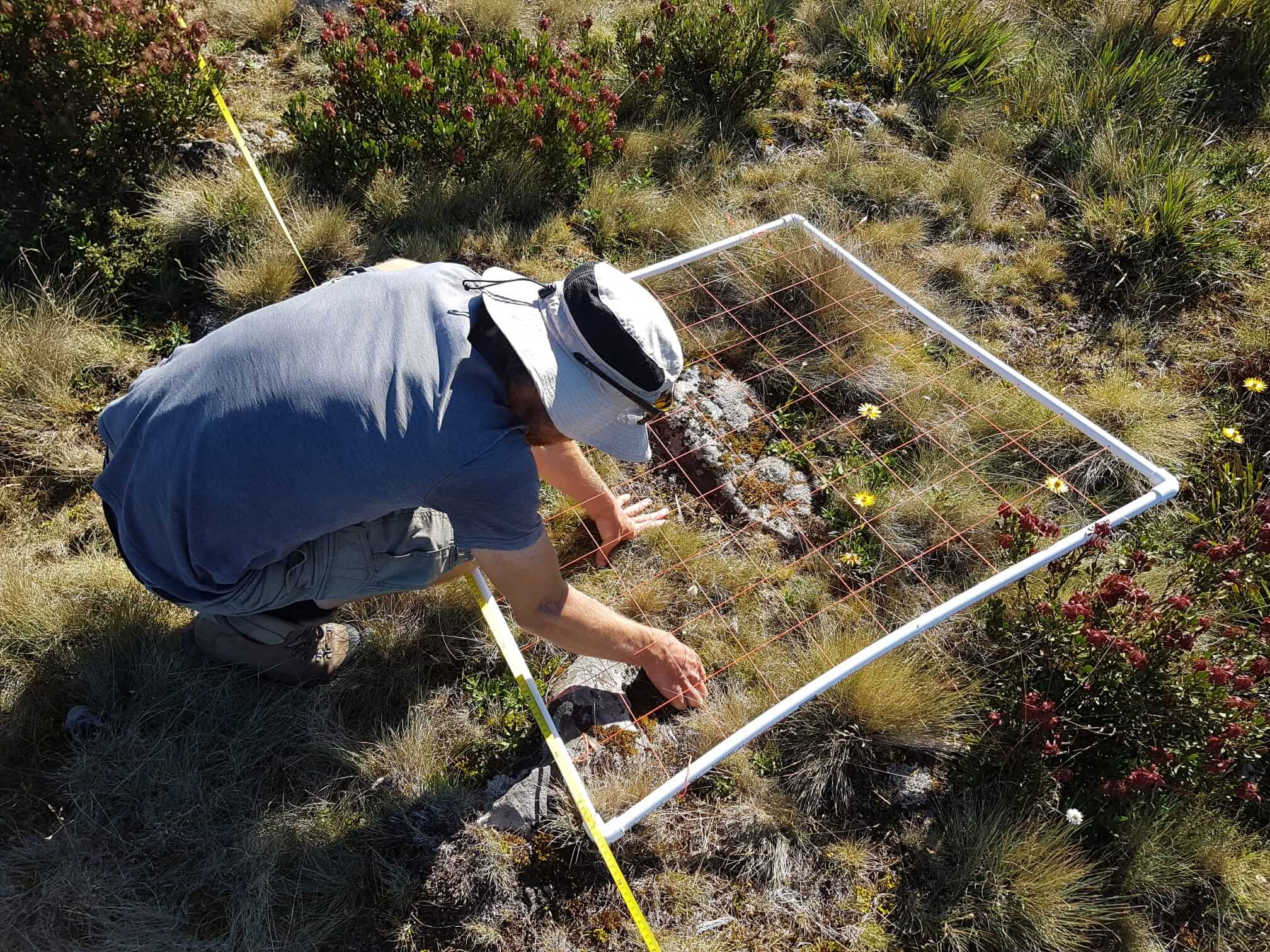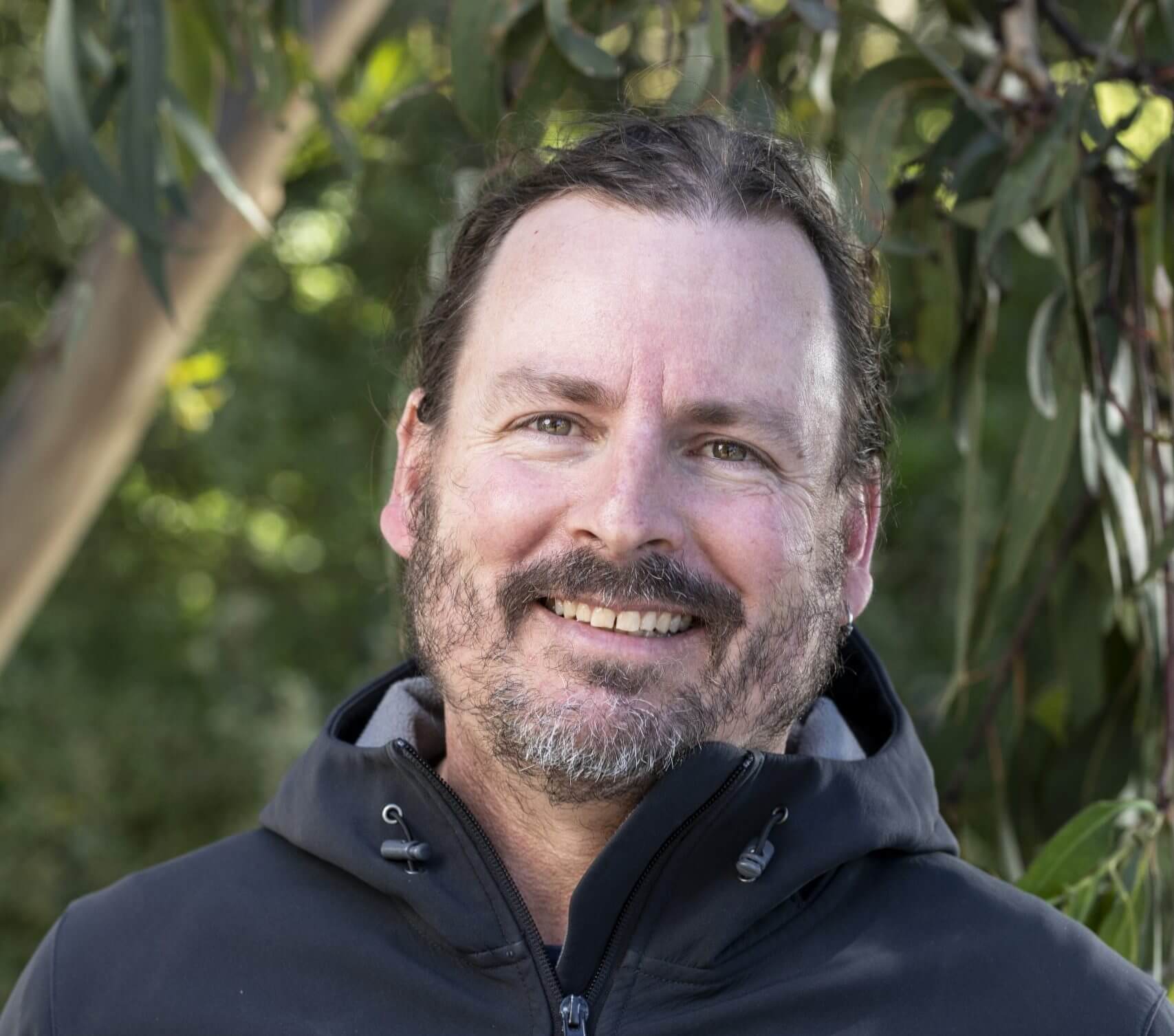The Bigger Picture – Esa Conference 2022
Greetings from sunny Wollongong, NSW, where I write to you after the second day of talks and presentations at the joint Ecological Society of Australia (ESA) and Society for Conservation Biology Oceania (SCBO) Conference.
Feeling very fortunate to be here, I’m trying to fit as much as I possibly can into the experience. Today I began the day with a bunch of keen delegates and our local guides Isabella and Max for a birdwatching walk along Puckey’s Lagoon, getting my eye in for our own Land for Wildlife birding event with Inala Nature Tours on Bruny Island this weekend. It was great to see ibis in their natural habitat, and to hear the calls of the eastern yellow robin and eastern whip bird, along with the white-browed scrubwren which followed us along the trail with its constant chatter.
The talks that I attended started with an incredible presentation by Dorothy Esau, from the Baru Conservation Alliance in the Solomon Islands. In full traditional dress, Dorothy described her culture and traditions, something her people fiercely protect and value, and the work that her community is doing to protect her traditional lands. This work includes discovering new species during surveys with members of the Australian Museum. Dorothy also talked of a massacre of her people and the reconciliation path that she and her people are on with the Australian and British Governments. It was very sad, inspiring and powerful all at once.
This was followed by a presentation from Oliver Costello, an incredibly busy Bundjulung man from the Northern Rivers region in NSW. Oliver told stories about his family, his culture and the powerful and important connections between culture and caring for country in the face of some pretty big natural disasters that have gone through his country. His talk topped off a very powerful morning for me.
When I walked out, I saw the familiar bright yellow hats of some Laynhapuy Rangers from North East Arnhem Land. In a previous job, I worked with this group on their Indigenous Protected Area, as well as many others. It was a great chance to practice my Yolngu matha language, to establish my kinship connection to the rangers and talk about some of the other rangers I worked with up there. I then spent most of the morning running between a symposium about Indigenous Ecological Knowledge where the rangers and many other indigenous practitioners talked, and another titled ‘Maximizing outcomes for biodiversity and society though innovative approaches to private land conservation’.

There were some great talks in both rooms, and one of the highlights was to hear from Deborah Metters, coordinator for Land for Wildlife in SE Queensland. Some of the amazing facts I took away from her talk were that in that area of Queensland, there are over 5,400 properties signed up to LFW, serviced by 30 staff working between 14 local governments and covering 8,4000 ha – just in the small corner of SE Queensland! Deborah talked about the results of a survey that she has conducted with Land for Wildlife members covering a wide range of topics. The relationship between belonging to the program, wellness and mental health benefits to the participants and the resulting improvement of the habitats within the program was really interesting. I nearly fell off my chair when she explained that just within the respondents to the survey, almost $23 million of their own money (in actual spending and time spent working on conservation) has been spent by Land for Wildlife members in the last financial year! Such is the dedication of Land for Wildlife members. It is an amazing return on investment for the program. It was great to have a long sit down over lunch with Deborah and swap notes about the way we coordinate the programs in our respective areas of the country.
On the previous day, I checked in with TLC ecologist David Hamilton during his poster session, which highlighted really interesting potoroo behaviour data from TLC camera surveys, comparing areas with and without devils and feral cats – you can read more about it in the TLC Annual Report. It was great to see the huge variety of other posters on display including at least two that acknowledged the support of TLC in the research. Dave will also be presenting on the eastern quoll translocation work that he has been involved in with TLC.
Another sobering session I sat in on was about coffee agriculture, the potential impacts that it can have on biodiversity depending on the method used to grow the plants, and the predicted need to almost double the production of Arabica and Robusta varieties in the near future to cope with the growing demand for coffee around the world. I felt quite guilty as I have been relying on regular cups of the stuff to get over my 4am start from Hobart!
There are such varied topics and connections to take in and I’m really looking forward to day three. I reckon I might join the bird walk again in the morning to enjoy more of what Wollongong has to offer me…





